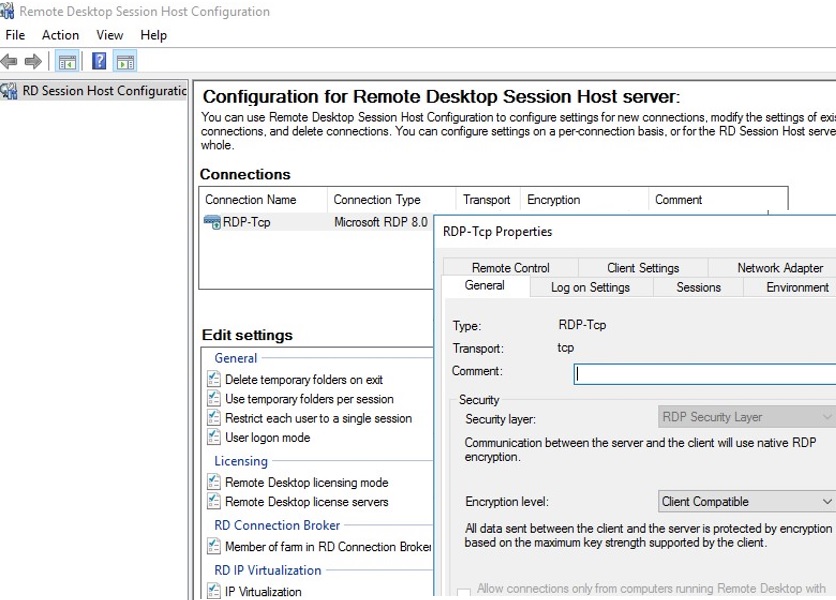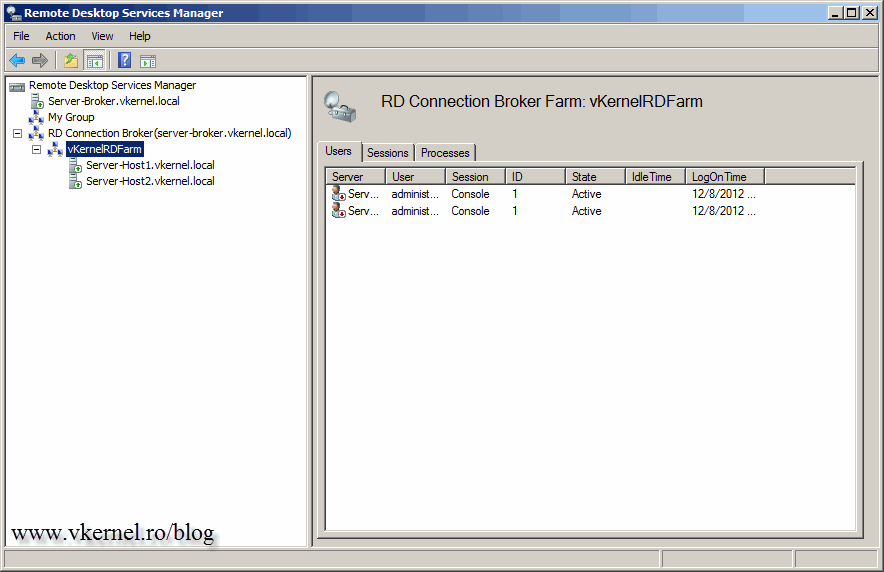
- #WINDOWS SERVER 2012 TERMINAL SERVICES MANAGER HOW TO#
- #WINDOWS SERVER 2012 TERMINAL SERVICES MANAGER INSTALL#
- #WINDOWS SERVER 2012 TERMINAL SERVICES MANAGER UPDATE#
- #WINDOWS SERVER 2012 TERMINAL SERVICES MANAGER WINDOWS#
#WINDOWS SERVER 2012 TERMINAL SERVICES MANAGER HOW TO#
#WINDOWS SERVER 2012 TERMINAL SERVICES MANAGER WINDOWS#
The deployment process and the components are the same in Windows Server 2012 RDS, so youll feel right at home if youve deployed the previous version. When the user logs in, the links are no longer there! Remote Desktop Services (RDS) in Windows Server 2008 R2 consists of numerous components that perform specialized roles to make virtual desktop infrastructure (VDI) possible.
#WINDOWS SERVER 2012 TERMINAL SERVICES MANAGER UPDATE#
Once this is done you can confirm that the actual lnk security properties update according to what is set in GPO. This setting sets the security permissions of the lnk to whatever you select in the GPO settings. The path here should match the path \\program data\microsoft\. Entered the path starting with %AllUsersProfile%\microsoft\. Once I knew that, I could control it using computer configuration ->policies->windows settings->security settings->file system. The trick for me was identifying exactly where the files being copied is coming from. There are lots of posts out there on how to do it using GPO but they were not working 100% and in this post the paths did not exactly match for me for some reason. Thanks for the excellent post! This helped me to find another solution using GPO. To stop the "Windows PowerShell.lnk" and "Server Manager.lnk" shortcuts from getting pinned to the start menu on all users, simply delete these icons from the All Users profile under "C:\ProgramData" from the following locations: How to Prevent the icons from getting Populated to User Profiles "C:\Users\username\AppData\Roaming\Microsoft\Internet Explorer\Quick Launch\User Pinned\TaskBar\Windows PowerShell.lnk"

"C:\ProgramData\Microsoft\Windows\Start Menu\Programs\System Tools\Windows PowerShell.lnk" The "Windows PowerShell.lnk" file gets copied by the user profile creation From: "C:\Users\username\AppData\Roaming\Microsoft\Internet Explorer\Quick Launch\User Pinned\TaskBar\Server Manager.lnk" "C:\ProgramData\Microsoft\Windows\Start Menu\Programs\Administrative Tools\Server Manager.lnk" The "Server Manager.lnk" file gets copied by the user profile creation From: The user profile creation process creates Quick Launch\User Pinned\TaskBar folder as part of the login then copies a bunch of "lnk" shortcut files from the "All Users Profile". This process appears to be hardcoded into Windows Server 2012 and executed upon creating a new user profile. Click the following link to learn how to start TELNET service in Windows Server, using Services MMC snap-in.So how do these icons get created in the users profile and where do they come from? Once the TELNET server installation is completed, you need to start the TELNET service in Windows Server. Step 9 - Click "Close" button in "Results" page to finish TELNET server installation and to close the Wizard.
#WINDOWS SERVER 2012 TERMINAL SERVICES MANAGER INSTALL#
Step 8 - Click "Install" button, in "Confirmation" page, to install TELNET server. Step 7 - Select "Telnet Server" from the list of available features, in "Features" page. Step 6 - In "Server Roles" page, click "Next". In this case, we have only one server, OMNISECU-SERV.

Step 5 - Select the server where you want to install the TELNET server service from the list of available servers. Step 4 - Make sure "Role-based or feature-based installation" radio button is selected. Step 3 - Click "Next" in the first page of the "Add roles and features Wizard". Step 2 - Once the Server Manager is open, click "Add roles and features", as shown below.

Step 1 - To install TELNET server service in Windows Server 2012, open Server Manager from Windows Server 2012 start menu, by clicking it. You should login as an Administrator to perform this task successfully. How to install TELNET Client in Windows 10įollow these steps to install TELNET server in Windows Server 2012 using Server Manager.How to start TELNET service in Windows Server.I suggest you to learn below lessons, before continuing. So, to show you how to install TELNET server in Windows server, I had selected Windows server 2012. TELNET server was shipped inbuilt in previous Windows server Operating System products, but not available in Windows Server 2019 because of the security vulnerability of TELNET protocol. Before connecting to any TCP/IP device using TELNET protocol, the very basic requirement is to install and run the TELNET server on that device. This tutorial lesson explains how to install TELNET server in Windows server. How to install TELNET server in Windows Server using Server Manager


 0 kommentar(er)
0 kommentar(er)
